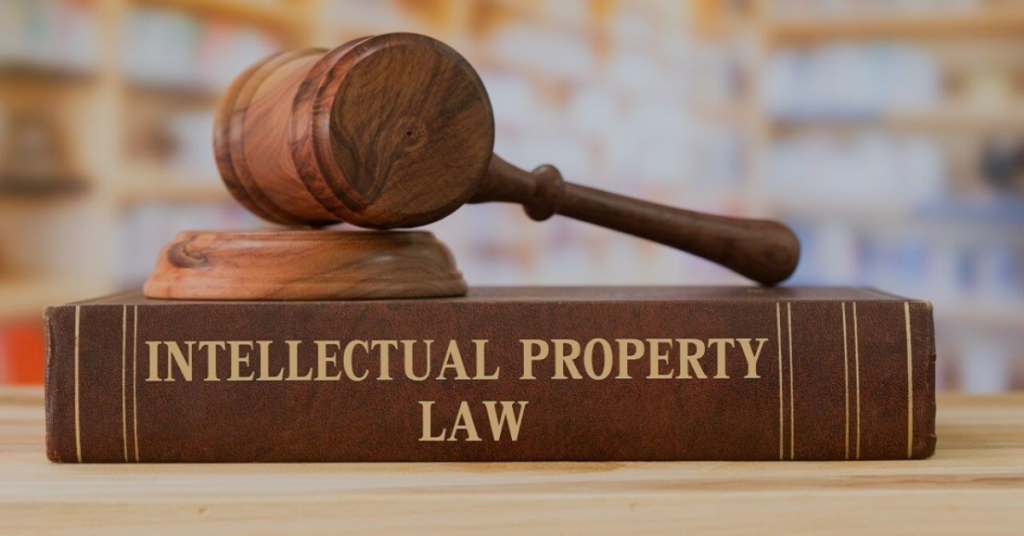Bar to Further Suit Under the Civil Procedure Code, 1908: Understanding Res Judicata and its Implications in Indian Law
The principle of res judicata, enshrined primarily in Section 11 of the Code of Civil Procedure (CPC), 1908, acts as a powerful "bar to further suit." It prevents parties from relitigating issues that have already been decided by a competent court. This doctrine is fundamental to ensuring judicial finality, preventing multiplicity of proceedings, and promoting the efficient administration of justice within the Indian legal system. This article delves into the intricacies of res judicata, exploring its essential elements, exceptions, and practical applications within the context of Indian law.
What is Res Judicata?
The term res judicata is derived from Latin, meaning "a matter judged." It essentially signifies that a judgment, once rendered by a court of competent jurisdiction, should be conclusive between the parties and their privies. This prevents the same parties from re-litigating the same issues in subsequent suits. The doctrine is based on three key maxims:
- Interest reipublicae ut sit finis litium: It is in the interest of the state that there should be an end to litigation.
- Nemo debet bis vexari pro una et eadem causa: No one should be vexed twice for the same cause.
- Res judicata pro veritate accipitur: A judicial decision must be accepted as correct.
The objective behind this principle is to conserve judicial resources, protect individuals from harassment, and uphold the integrity of the judicial process.
Section 11 of the CPC: The Statutory Foundation
Section 11 of the CPC provides the statutory basis for res judicata in India. It states:
"No Court shall try any suit or issue in which the matter directly and substantially in issue has been directly and substantially in issue in a former suit between the same parties, or between parties under whom they or any of them claim, litigating under the same title, in a Court competent to try such subsequent suit or the suit in which such issue has been subsequently raised, and has been heard and finally decided by such Court."
The section outlines several crucial elements that must be satisfied for res judicata to apply.
Essential Elements of Res Judicata
For res judicata to operate as a bar to a subsequent suit, the following conditions must be met:
-
The Matter Directly and Substantially in Issue: The matter in the subsequent suit must be directly and substantially the same as the matter that was directly and substantially in issue in the former suit. This is the most critical element. It's not enough for the issues to be superficially similar; they must be at the core of both disputes. Courts often scrutinize the pleadings, issues framed, and judgments in both suits to determine if this requirement is satisfied.
-
Same Parties or Parties Claiming Under Them: The former and subsequent suits must involve the same parties or parties who claim under them. "Parties claiming under them" encompasses legal representatives, assignees, heirs, and other individuals who derive their rights or interests from the original parties. Res judicata also applies to those who are privy to the parties.
-
Litigating Under the Same Title: The parties must be litigating under the same title in both suits. "Title" refers to the capacity or the right in which the parties are suing or being sued. For example, if a person sues as an owner in the first suit and subsequently sues as a tenant, they are not litigating under the same title.
-
Court Competent to Try the Subsequent Suit (or the Suit in which the Issue is Raised): The court that decided the former suit must have been competent to try the subsequent suit (or the suit in which the issue is subsequently raised). This doesn't mean the court actually tried the subsequent suit, but rather that it had the jurisdiction to do so. The competency of the court is determined by its pecuniary jurisdiction (the monetary value of the claim) and its subject matter jurisdiction (the type of cases it is authorized to hear). A decree passed by a court lacking jurisdiction is a nullity and cannot operate as res judicata.
-
Heard and Finally Decided: The matter must have been heard and finally decided by the court in the former suit. This implies that the court must have applied its judicial mind to the issues in dispute and rendered a definitive judgment. Dismissal of a suit for default, or withdrawal of a suit without permission to file a fresh suit, generally does not constitute a final decision for the purpose of res judicata.
Explanations to Section 11: Clarifying Ambiguities
Section 11 includes several explanations that clarify the application of res judicata in specific situations. Some key explanations include:
-
Explanation I: The expression "former suit" shall denote a suit which has been decided prior to the suit in question whether or not it was instituted prior thereto. This means that the relevant suit is the one that was decided first, regardless of when it was filed.
-
Explanation IV: Any matter which might and ought to have been made ground of defence or attack in such former suit shall be deemed to have been a matter directly and substantially in issue in such suit. This introduces the concept of "constructive res judicata," which bars a party from raising grounds of attack or defense in a subsequent suit that they could and should have raised in the former suit. This is a crucial aspect of preventing parties from strategically withholding arguments to pursue future litigation.
-
Explanation V: Any relief claimed in the plaint, which is not expressly granted by the decree, shall, for the purpose of this section, be deemed to have been refused. This implies that if a party claims a particular relief in the former suit but the court doesn't grant it, it's considered as if the court explicitly rejected that relief.
-
Explanation VI: Where persons litigate bona fide in respect of a public right or of a private right claimed in common for themselves and others, all persons interested in such right shall, for the purpose of this section, be deemed to claim under the persons so litigating. This applies to representative suits, where the outcome binds all parties with a similar interest, even if they were not directly involved in the litigation.
-
Explanation VIII: An issue heard and finally decided by a court of limited jurisdiction, competent to decide such issue, shall operate as res judicata in a subsequent suit, notwithstanding that such court of limited jurisdiction was not competent to try such subsequent suit or the suit in which such issue has been subsequently raised. This clarifies that the principle applies even when the earlier decision was made by a court with limited jurisdiction, as long as that court was competent to decide the specific issue.
Exceptions to Res Judicata
While res judicata is a robust principle, there are recognized exceptions where it will not apply:
-
Fraud or Collusion: If the former judgment was obtained by fraud or collusion, it will not operate as res judicata. Fraud unravels everything, and a judgment obtained through deceit cannot be binding.
-
Lack of Jurisdiction: As mentioned earlier, if the court that passed the former decree lacked jurisdiction, the decree is a nullity and cannot bar a subsequent suit.
-
Change in Law: If there has been a change in the law after the former decision, res judicata may not apply. The rationale is that the new law may alter the legal landscape and render the former decision no longer valid.
-
Judgment in Rem: A judgment in rem (a judgment that binds the whole world, such as a probate or admiralty judgment) can be challenged on grounds of fraud, collusion, or lack of jurisdiction.
-
Consent Decree: The application of res judicata to consent decrees can be complex. While generally a consent decree operates as res judicata, it is subject to certain limitations. For instance, if the consent decree is based on a compromise that is unlawful or against public policy, it may not bar a subsequent suit.
Constructive Res Judicata
Explanation IV to Section 11 introduces the doctrine of constructive res judicata. This prevents a party from raising a ground of attack or defense in a subsequent suit that they could and should have raised in the former suit. The underlying principle is that litigation should be comprehensive, and parties should not be allowed to split their claims or defenses into multiple lawsuits. The Supreme Court has emphasized that the application of constructive res judicata should be approached with caution, ensuring fairness and preventing potential injustice. The key is whether the matter was intrinsically linked to the original cause of action and could have been conveniently raised in the initial suit.
Res Judicata and Public Interest Litigation (PIL)
The application of res judicata to Public Interest Litigation (PIL) is a complex area. While the general principles of res judicata apply, the courts have exercised discretion, recognizing that PILs involve broader public interests. A subsequent PIL may be entertained if the previous PIL was dismissed without a thorough examination of the issues or if there are new and compelling grounds that warrant judicial intervention. The focus is on preventing abuse of the PIL process while ensuring that genuine public grievances are addressed.
Distinguishing Res Judicata from Res Sub Judice
It's important to distinguish res judicata from res sub judice. Res sub judice (Section 10 of the CPC) deals with the situation where a matter is pending before a court. It prohibits the trial of any suit in which the matter directly and substantially in issue is also directly and substantially in issue in a previously instituted suit between the same parties (or their representatives) pending in the same or any other court in India having jurisdiction to grant the relief claimed. Res sub judice aims to prevent parallel proceedings, while res judicata prevents the re-litigation of already decided matters.
Practical Implications and Examples
Consider the following examples to illustrate the application of res judicata:
-
Example 1: A files a suit against B for recovery of money based on a promissory note. The court dismisses the suit after holding that the promissory note is not genuine. Subsequently, A files another suit against B for the same amount based on the same promissory note. Res judicata will apply, barring the second suit.
-
Example 2: A files a suit against B for possession of a property, claiming to be the owner. The suit is dismissed. A then files another suit against B for possession of the same property, claiming to be a tenant. Res judicata may apply, depending on whether the court finds that A could and should have raised the tenancy claim in the first suit (constructive res judicata).
-
Example 3: A sues B for damages for breach of contract. The court awards A a certain amount of damages. A later files another suit against B for further damages arising from the same breach of contract. Res judicata will likely apply, as the matter of damages for the breach was already decided.
Conclusion
The doctrine of res judicata, as codified in Section 11 of the CPC, is a cornerstone of the Indian legal system. It ensures finality to litigation, prevents the harassment of parties, and promotes the efficient administration of justice. While the principle is generally strictly applied, exceptions exist to prevent injustice and address situations where the former judgment was obtained improperly or where the legal landscape has changed. Understanding the essential elements of res judicata, its explanations, and its limitations is crucial for both legal professionals and individuals navigating the complexities of the Indian legal system. The principle serves as a vital mechanism for maintaining the integrity and efficiency of the courts.




